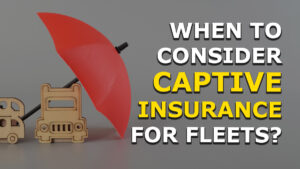
Simply put, insurance companies determine how much risk your company or driver is to insure.
Underwriters look at many different risk factors and data provided to establish the potential risk levels and determine your insurance score, one of the primary determinants in how much monthly insurance premium the consumer will incur.
After this analysis and determination of an insurance score, underwriters can provide a monthly premium estimate.
There are a few main factors used to calculate your insurance score, including:
- credit score
- accident history, and
- insurance history
There are several ways to increase insurance scores and possibly lower their premiums. For example, a consumer can positively influence premiums by improving their credit score, which can be accomplished by paying bills on time which also reduces any type of debt, another positive.
The main factor we will explore is your insurance claims history. Driving as safely as you can to avoid accidents and violations is the key to prevent negative claims history.
How driver training and ELDs can improve insurance score
Many insurance companies are allowing ELD and telematic engine data to add details to a driver’s safe driving history. This includes data such as harsh braking, harsh acceleration, harsh turning, speeding, etc.
While this data is important, adding more premium insurance credits like proactive driver training adds more history to improve your insurance score.
For carriers using ELDs or telematic devices in their fleet vehicles, they are able to highlight which drivers are struggling in each area by using the telematics reports or driver scorecards.
For example, the telematic data can highlight a habit of hard acceleration and hard braking for one driver, while emphasizing another driver’s habit of various HOS violations.
These red flags can immediately trigger the scheduling of drivers for video training related to defensive driving, fuel efficiency, HOS regulations, or driver ELD training.
Customized training should also be measurable. This can be accomplished by using regular quiz assessments to track driver performance as well as monitoring ELD driver scorecards for improvement after their training. If training assessment scores are low or the habit continues, then training needs to be retaken or a driver performance review could be scheduled.
Fleets utilizing cameras to review crash events in their driver training program is another way ELD data or fleet technology can add premium insurance credits and lower insurance premiums.
According to a CCJ article, driver trainers at Smith Transport review event video and data when drivers show risky behaviors such as speeding or rapid deceleration (hard braking). They coach drivers on areas they need to improve. With this proactive approach to safety, the company does not expect to see much of an increase in insurance premiums for its next policy renewal.
“Technology such as this helps to tell the story to the underwriters of how important safety is to us, and what we are doing as a company to ensure that we can reduce frequency and severity of accidents,” says Eric Nelsen, vice president of safety and driver recruiting. He expects the technology will also lower the fleet’s CSA scores.
How driver training and pre-trip inspections can improve insurance score
Teaching a driver how to do a pre-trip and post-trip inspection is as important as teaching them how to drive the truck.
Some of the easiest things to catch during a driver inspection are also the most common violations written up on a roadside inspection.
The quickest way to increase insurance premiums are violations and crash history.
In addition to the costly fines resulting from violations—an average of $7,000 per case for violations—the FMCSA found that the average cost of a truck crash involving a tractor-trailer was $172,000, if pulling one trailer, and over $500,000 for two or three trailers.
Moreover, insurance premiums will increase.
Drivers just need to be educated on what they are looking for during their daily inspections and what the DOT is looking for when they are writing up violations.
Proper pre and post-trip inspections should take at least 30 minutes to perform thoroughly and will reduce vehicle maintenance and violation costs.
All fleets need to conduct proper and thorough pre and post trip inspections, which consists of implementing quality:
- driver training that is ongoing and consistent
- driver education, and
- driver awareness of current and changing traffic laws
All of this will help prevent being targeted by the DOT at roadside inspections and is a valuable resource to ensure a healthy fleet, and compliant safety practices.
Insurance companies that receive this training data will add premium insurance credits that will help increase insurance credit scores and lower insurance premiums.





